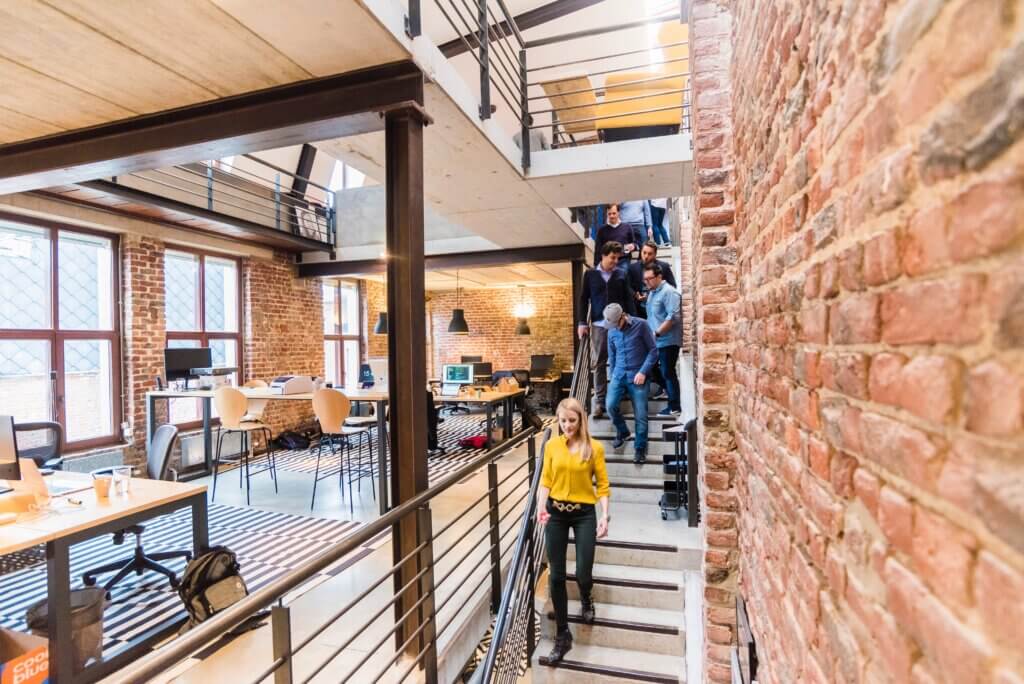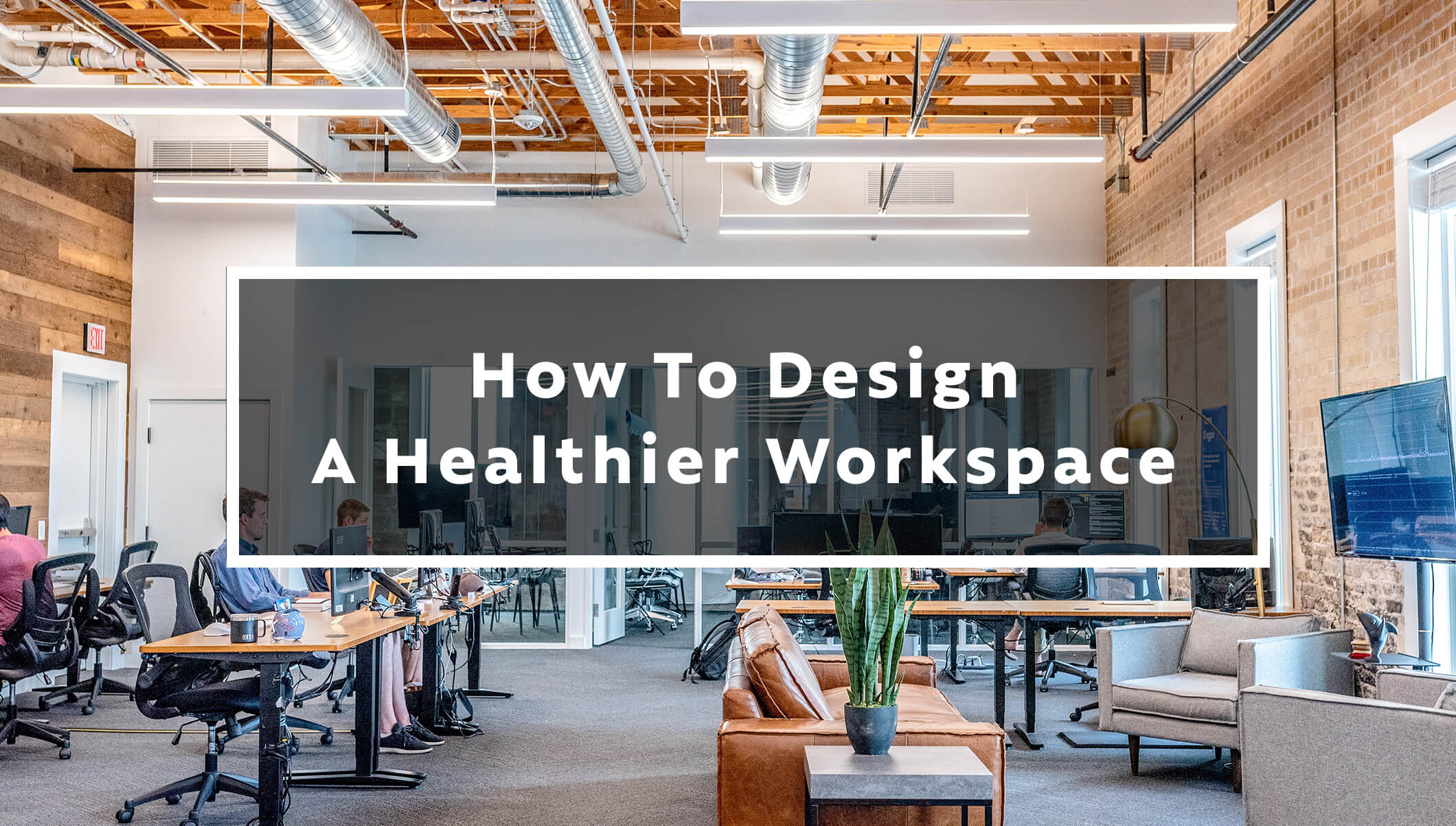Covid has put a big spotlight on how our workplaces affect our health. Right now many of us are reading this from our homes, where we have been working for the past nine months. Those offices who do have employees come in have made extraordinary changes to keep workers safe and healthy. More than ever before, the focus has shifted to design for a healthier workplace.
Although these are unusual times, it doesn’t seem likely that once the pandemic passes, our offices will return to the old status quo. And they shouldn’t! Because for many, the status quo wasn’t great.
How many of us have been laid low thanks to a bout of cold or flu sweeping through the office? Or drove home at the end of the day with a backache after sitting all day?
Office managers and designers have an opportunity to create spaces that improve the health and wellness of those who use them. And I don’t just mean spaces that are easy to disinfect. Because there’s more to wellness than preventing the spread of viruses, whether that’s the common cold or something more serious.
Here are a few considerations when considering design for a healthier workspace:

Encourage Movement-Flexible Workspaces
“The Silent Killer” is what some doctors are calling it. A dramatic name for “too much sitting.” But drama aside, it’s a serious problem! A sedentary lifestyle (such as 6-8 hours of sitting continuously at your office desk) is linked to diabetes, high blood pressure, and increased risks of heart disease and stroke. So get your office moving! Even small short breaks of standing and moving around have a significant effect.
Design workspaces for flexibility, with different spaces for different work – small collaboration spaces, larger meeting rooms, quiet zones, private offices. Beyond wellness considerations, these types of workspaces have already been increasingly popular because they allow employees to work in spaces optimized for the task at hand. A person can focus in a quiet zone to finish answering emails in the morning, be energized working with others in a collaborative area in the afternoon, and finish their end of day meetings in conference rooms without disturbing others.
But these workspace designs also have the benefit of encouraging movement throughout the day. Employees aren’t stuck hunched over at their private workstation for 8 straight hours.

Encourage Movement 2: Furnishings!
Besides movement between spaces, encourage movement within each of these spaces. Standing desks are one of the most popular choice for this, allowing employees to switch between sitting and standing as they work throughout the day. But there are many other options that encourage more activity. Chairs made for “active sitting” keep you moving while balanced and comfortable. More extreme options like bike desks let you exercise while editing reports.
Writable walls are another addition that can encourage employees to get up and moving. Any wall transforms into a standing space for brainstorming, collaborating with others, or simply organizing a to-do list. Peerhatch writable wall covering turns the entire wall space into a dry-erase surface. They’re an incredibly functional tool to facilitate creativity and productivity – while giving your health a boost as well!
Bonus: did you know that Peerhatch writable walls are cleaned with a rubbing alcohol solution and microfiber cloth? That means you’re disinfecting this shared surface every time you wipe down any writing.

Easy to Clean & Disinfect Surfaces
“Wipe down all commonly used surfaces frequently” has become a familiar refrain. And although it’s an especially crucial instruction now, cleaning and disinfection protocols are always a vital part of maintaining a healthy workspace. Of course, not every surface is created equal. Wiping down a stainless steel countertop and trying to clean every nook and cranny of a carved wooden desk are two very different tasks.
Choose furnishings that wipe down quickly and easy – especially for frequently touched features such as tabletops. When it’s easy to do, it’s much more likely they’ll be cleaned thoroughly and frequently. This is especially important for offices that don’t have a nightly cleaning crew. Employees are much more likely to take initiative if cleaning is a 2-second wipe down instead of 5-minute job.

Thoughtful Material Choices
Consider using more antimicrobial materials when possible as part of your design for a healthier workspace. These are materials that inhibit the growth and spread of germs and bacteria. They are commonly used in health care facilities, but are quickly becoming popular in other communal spaces. Silver, copper, and copper alloys are all naturally antimicrobial – one of the reasons copper alloys are so popular for faucets, handles, and other small and frequently touched objects.
Of course, they’re not cost-effective for most applications. Fortunately, there are plenty of man-made (and less expensive) alternatives. The selection of available antimicrobial fabrics, wallpaper, surface films and coatings is steadily growing.

Wow Windows – More Natural Light
You probably already know a designer who likes to wax poetically about the benefits of natural light (if you don’t, heads up, you might be that designer). Well they have a point! Actually, they have many points:
- Improves sleep – sunlight tells your brain when to wake up and when to fall asleep. When all you get is artificial light all day, it can confuse your circadian rhythm, making it hard to fall asleep and stay asleep at night.
- Improves mood – sunlight improves our serotonin levels, a key hormone that stabilizes mood and creates feelings of well-being and happiness. Generally speaking, human beings are happier when we get our daily dose of sunshine.
- Reduces blood pressure – in response to our skin being exposed to sunlight, our blood vessels widen, thus lowering blood pressure. Consider now that nearly half of adults in the US have high blood pressure, which puts you at risk for heart disease, and this benefit is nothing to scoff at.

And I hear you nay-sayers in the back. “But the heat…and the computer glare…” I get it, I live in Southern California, the bright and HOT sunshine can be just as much a curse as a blessing some days. Our solution? Solar control film.
Solar control window film significantly reduces both heat and computer glare, giving your office HVAC unit and your eyes a break. It’s a simple product that allows you to enjoy all the benefits of natural daylight without the drawbacks.
Design to take advantage of these benefits. Plan for work areas to be in spaces that receive the most natural daylight. When placing large pieces of furniture or other features – do so in a way that minimizes how they block the light.

Conclusion
Health and wellness should be top concerns for designers creating workspaces. These are after all buildings that people will be spending half their waking hours inside. And factoring in design for a healthier workspace is no longer something we can push to the side. Luckily there are many strategies to do this. From adding writable walls that encourage movement, to using antimicrobial materials – designers can have a big impact on improving the wellness of office employees. The suggestions listed in this blog are just the tip of the iceberg. Together we can create a healthier work environment in the future.

